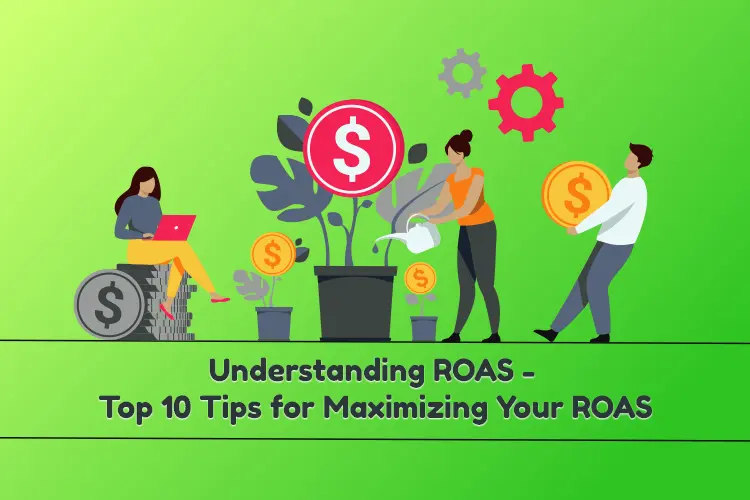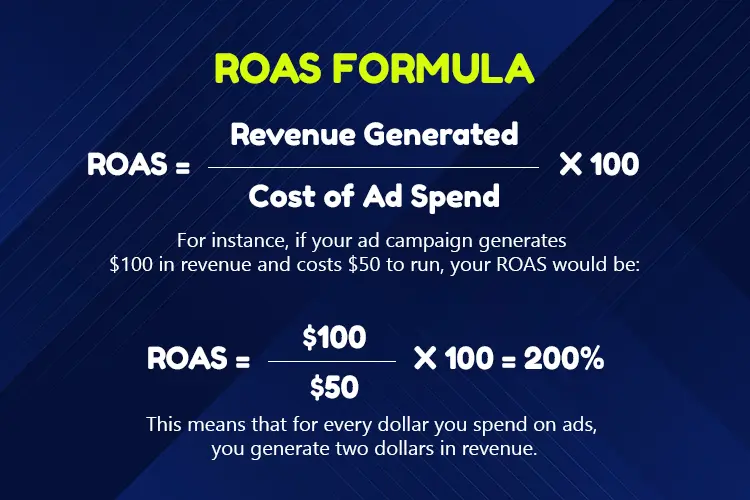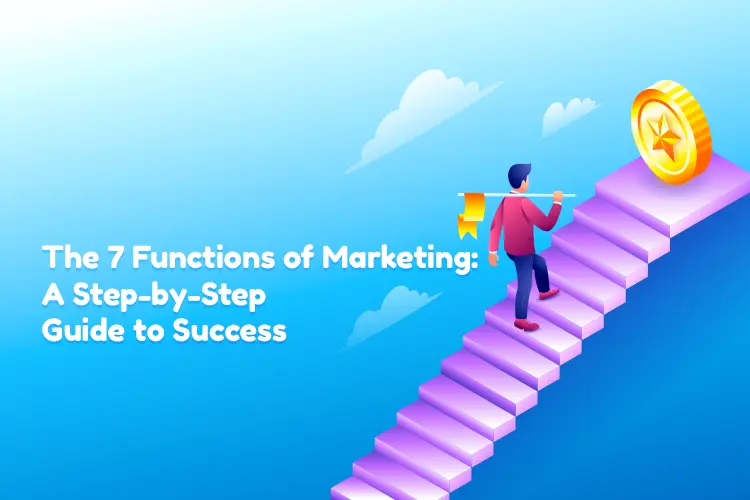Return on ad spend shows how well your ads work by looking at sales and money from your ad efforts. This post breaks down the return on ad spend process how ROAS differs from ROI, and what return on ad spend numbers mean. We will throw in ten tricks to boost your ad spend returns and pump up your go-to gains.
What is ROAS (Return on Ad spend)?
ROAS stands for Return on Ad Spend. It measures how much you earn for every penny spent on advertising. For example, if you spend a hundred on advertising and make three hundred on sales, your return on ad spend is 3:1. This means he got three times the amount he spent. ROAS helps you measure the effectiveness of your ads.
ROAS Formula
The ROAS formula is straightforward
ROAS = (Revenue Generated / Cost of Ad Spend) x 100
For instance, if your ad campaign generates $100 in revenue and costs $50 to run, your ROAS would be:
ROAS = ($100 / $50) x 100 = 200%
This means that for every dollar you spend on ads, you generate two dollars in revenue.
How to Determine ROAS
Use this simple way to do it
Track Ad Spend
Keep a record of every dollar you spend on advertising campaigns. This includes:
- The cost of the ads.
- The cost of placing the ads.
- The cost of making/designing the ads.
- Any other expenses related to running the ads.
Track Revenue
Keep track of the money made from each advertising campaign. This includes:
- Sales revenue.
- Conversions from the ads, like leads.
Find ROAS
- Use this formula: Return on ad spend = (Revenue Earned / Cost of Ad Spend) x 100%.
- For example, if an ad cost 50 and brought in 100, the calculation would be:
- ROAS = (100 / 50) x 100% = 200%.
- This means you made two dollars in revenue for every dollar you spent.
By following these steps, you can easily determine the Return on ad spend for your ad campaigns and see how well they perform. You can instantly see the return on investment in any advertising campaign and measure its effectiveness by following these simple steps.
ROAS and ROI
While both ROI and ROAS are important, they serve different purposes. Marketing ROI calculates the return on investment in a project or activity, while return on ad spend examines the revenue generated by a specific advertising campaign or strategy
ROI provides a comprehensive view of the overall performance of a business or project. In contrast, Return on ad spend helps to optimize advertising spend and increases the effectiveness of advertising efforts.
What is Good ROAS?
Good Return on ad spend depends on your business, audience and advertising spend. Here are some general guidelines
- Optimal ROAS for eCommerce businesses is often over 150%.
- Good Return on ad spend for B2B businesses will be 200% higher.
- Good ROAS for service-based businesses typically exceeds 300%.
10 Tips for Maximizing Your ROAS
ROAS is key to measuring the effectiveness of an PPC or advertising campaign and optimizing your ad spend. Setting clear objectives, targeting high-value audiences, and using user-generated content can increase your return on advertisement spend and to grow your business.
1. Set clear goals
Define your ROAS goal before launching an advertising campaign. This helps you focus and measure your success. Consider your revenue goals, audience, and duration of advertising.
2. Optimize your ad spend
Review and adjust your ad budget on a regular basis. Use tools like Facebook Ads Manager to monitor performance. Assign more budgets to underperforming ads and reduce spending on underperforming ads.
3. Target the Most Valuable Audience
Use statistics to find and target the audience with the highest conversion rates. This includes frequent buyers or bulk orders. Tools like Google Analytics and Facebook Insights can help identify these categories.
4. Use Retargeting Ads
Retarget those who interacted with your business but didn’t make a purchase. These ads remind potential customers of their findings, increasing their chances of conversion.
5. Leverage the brand
Encourage customers to do things that are relevant to your brand. Content feels more authentic to the user and can increase engagement and conversion. Share this information on social media and in your marketing campaigns.
6. Use A/B Testing
Test ad formats, headlines, and call-to-actions to see what works best. A/B testing helps you find the most effective content and improves your Return on ad spend.
7. Monitor and adjust
Monitor your Return on ad spend and other key performance indicators (KPIs). Use the data to tailor your campaigns. Change ads that don’t work well or change them quickly.
8. Use the same audience
Reach out to new customers who are like your ideal customers. Platforms like Facebook and Google can build similar audiences based on the customers’ high-value information.
9. Use Dynamic Ad Creative
Customize ads to everyone’s tasks and preferences. This personalization can increase engagement and conversion. Facebook Dynamic Ads are useful for this.
10. Use ROAS-Optimized bidding
Use bidding strategies from advertising platforms. These algorithms adjust your bids to maximize return on ad spend, and ensure you get the best return on your ad spend. Tools like Google Ads, Target ROAS bidding can help.
Continue to measure and optimize your strategies to improve efficiency, and experiment with new ways to increase your return on ad spend. With the right approach, you can improve your ROAS and achieve your business goals.
Final Thoughts
Return on ad spend is important for any organization that invests in sponsored advertising. By understanding the return on ad spend process, the difference between ROAS and ROI, and knowing what makes Return on ad spend successful, you can fine-tune your ad spend to get results. Startmetric Services offers PPC services that can further optimize your campaigns. To increase your return and reach your business goals, set clear goals, optimize your ad spend, target maximum customer value, and deliver user-generated content. Keep experimenting and adapting, and you will unlock the potential for extraordinary business improvement.




